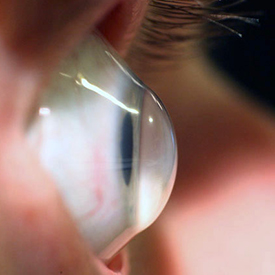Toric Implantable Contact Lens(TICL) is capable of providing good correction in cases of stable Keratoconus or after stabilization of the cornea by collagen cross linkage(C3R). TICL works similarly to a contact lens. The difference is that the lens is placed inside your eye, rather than on the surface. You can neither see nor feel the lens once it is inside your eye. The lens is meant to remain permanently in the eye. Because TICL is tiny and soft, it can be folded so small that it can be injected painlessly into your eye in seconds through a tiny opening in your cornea. Once injected, TICL unfolds into position in the liquid between your iris and your natural lens. The lens is easily accepted by our body. Implanting TICL is considered an outpatient procedure and takes about 15 minutes. A few hours after the treatment you will be able to leave the clinic and resume most of your activities. TICL provides high quality of vision, is a highly precise and predictable treatment and provides exceptional satisfaction.



